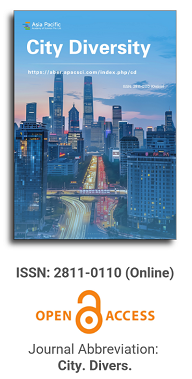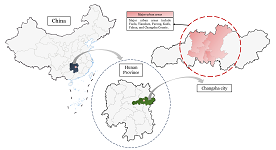
Asia Pacific Academy of Science Pte. Ltd. (APACSCI) specializes in international journal publishing. APACSCI adopts the open access publishing model and provides an important communication bridge for academic groups whose interest fields include engineering, technology, medicine, computer, mathematics, agriculture and forestry, and environment.

As China's pillar industry, the property market has suffered a considerable impact in recent years, with a decline in turnover and many developers at risk of bankruptcy. As one of the most concerned factors for stakeholders, housing prices need to be predicted more objectively and accurately to minimize decision-making errors by developers and consumers. Many prediction models in recent years have been unfriendly to consumers due to technical difficulties, high data demand, and varying factors affecting house prices in different regions. A uniform model across the country cannot capture local differences accurately, so this study compares and analyses the fitting effects of multiple machine learning models using February 2024 new building data in Changsha as an example, aiming to provide consumers with a simple and practical reference for prediction methods. The modeling exploration applies several regression techniques based on machine learning algorithms, such as Stepwise regression, Robust regression, Lasso regression, Ridge regression, Ordinary Least Squares (OLS) regression, Extreme Gradient Boosted regression (XGBoost), and Random Forest (RF) regression. These algorithms are used to construct forecasting models, and the best-performing model is selected by conducting a comparative analysis of the forecasting errors obtained between these models. The research found that machine learning is a practical approach to property price prediction, with least squares regression and Lasso regression providing relatively more convincing results.
Discussion on the biodiversity protection planning methods based on urban–regional scale
Vol 4, Issue 1, 2023
Download PDF
Abstract
This paper explores the relationship between the spatial scale and biodiversity protection level and thinks that under the specifi c urban-region scale, landscape diversity is the key level to the macroscopic protection of biodiversity. Based on the systematicness and the otherness of urban–regional environment and the biologic fl ow and process, the protection pattern of biodiversity within urban–regional scale should be established. The author holds that seeking the “optimal landscape pattern” is one of the core missions of biodiversity protection planning. Based on that, the paper summarizes the two types of city space and their biodiversity planning and design in two ways: first, the “Urban-rural landscape pattern optimization approach” specific to the space of city matrix, which includes “agglomeration segregation”, “landscape”, “green infrastructure”, three models and five pattern optimization strategies; second, the “Nature reserve approach” specific to the space of natural matrix, which includes “reserve circle” and “protected area network” two modes and six reserve design principles.
Keywords
References
- Yu K, Li D. Landscape planning approach for biodiversity conservation. Biodiversity. 1998; 6(3): 205–212.
- Fu B, Chen L. Types of landscape diversity and their ecological significance. Journal of geography. 1996; 51(5): 454–462.
- Wang Q, Wang X, Luo J, et al. Ecotone and biodiversity. Biodiversity. 1997; 5(2): 126–131.
- Yu K, Huang G, Li D, et al. Construction and organization of Landscape Network -- Discussion on landscape ecological planning of Shihua Cave Scenic Spot. Journal of urban planning. 2005; (3): 76–81.
- Fu B, Chen L, Ma K, et al. Principles and applications of Landscape Ecology (Second Edition). Beijing: Science Press; 2011 . pp. 253–254.
- Yu K, Wang S, Li D. Regional ecological security pattern: Beijing case. China Construction Industry Press; 2011.
- Benedict MA, Mcmahon ET. Green infrastructure. In: Huang L, Zhu Q, Du X, et al. (editors). Beijing: China Construction Industry Press; 2010. pp.12–14.
Supporting Agencies
Copyright (c) 2023 Bangrui Yue, Shilei Kang, Chang Jiang

This work is licensed under a Creative Commons Attribution 4.0 International License.

This site is licensed under a Creative Commons Attribution 4.0 International License (CC BY 4.0).

Prof. Mehmet Cetin
Kastamonu University,
Turkey
Polish Scientific Bibliography

